2019-04-28
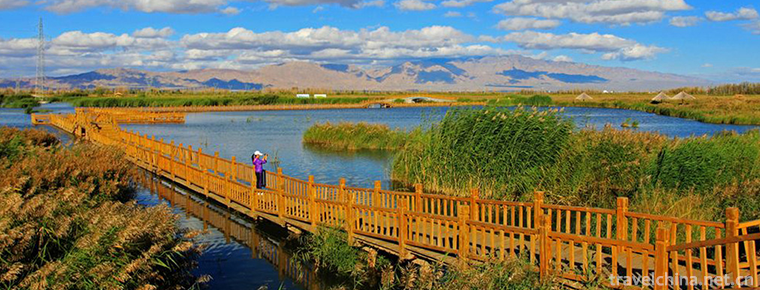
- By ChinaWiki.net
- Chinese Edition
- 2019-03-16
Zhangye National Wetland Park
Zhangye National Wetland Park is located in the northern suburbs of Ganzhou District, Zhangye City, which is closely linked with the urban area. Wetland area of 62,000 mu, the main body is located in the northern suburb of the urban groundwater spillover zone, adjacent to the urban area, is the nearest Wetland Park to the city in China. Diversified wetland types in the planning area are an important part of the fragile ecosystem in the inland arid area of Zhangye Oasis. They play important ecological functions such as water conservation and water resources storage, water purification, wetland biodiversity conservation, desertification prevention and improvement of the climate outside the region. As a key ecological support system, they play an important role in maintaining Zhangye Oasis and the middle and lower reaches of Heihe River. The safety of tourism ecology is of great significance.
Development history
In the integration of human and Heihe wetland for thousands of years, abundant spiritual wealth has been left behind, which has formed the profound connotation of the national historical and cultural city. In the Book of Mountains and Seas, Heihe is the territory of the West Queen Mother. In the literature of Yugong and Zhou Li during the Spring and Autumn Period, a large number of lakes from Heihe to Juyanze were listed as well-known lakes, known as the "West Sea". In the long course of historical development, Zhangye, located in the middle of the Silk Road, has become an important city where Chinese and Western cultures converge. This fertile soil has left rich and diverse historical and cultural relics. The Royal monastery, the Great Buddha Temple, the ancient city of Heishui, the Sui Dynasty wooden pagoda, the Tang Dynasty bell tower, the Ming Dynasty granary and the Qing Dynasty General Army Mansion have accumulated profound historical and cultural heritage. Historic events such as "Dayu guides the weak water in Heli", "Laozi rides Qingniu into quicksand", "King Zhou Mu's West Tour", "Zhang Qian's mission to the Western Regions", "Huo Qubing's Western Expedition", "Emperor Sui Yang's convening of the World Exposition", "Marco Polo's residence in Ganzhou" give this land magical charm.
Zhangye, which originated from wetlands, has a long history of farming culture. Since the Han Dynasty, Zhangye oasis agriculture has been at the forefront of development, which was valued by dynasties. In the Wuzetian period of Tang Dynasty, Ganzhou Cishi Li Hantong was ordered to introduce rice in Tuntian, Ganzhou. The rice of Wujiang River in the north of the city was once Gongmi because of its abundant sunshine, long growth period and mellow taste. Chang'an was transported along the Silk Road for a long time, and Zhangye was praised as "the world's richest man has never come out of Longyou". Guo Shen, a poet of the Ming Dynasty, has a poem cloud: "In the north of Ganzhou City, there is a glimpse of the Yellow River every autumn. There are many beautiful spikes in the Old Lianzhou area, which are rich and fragrant. This shows the profound origin of Zhangye's farming culture.
geographical environment
geographical position
Zhangye National Wetland Park is located in the northern outskirts of Ganzhou District, Zhangye City. It is closely connected with the urban area. Its geographical location is between 100 06'- 100 54', 38 32'- 39 24'. It covers an area of 62,000 mu, ranging from Kunlun Avenue in the east, Xinhe Bridge Section in the west to 312 National Highway and the East Bank of Heihe River, from south to North Ring Road in the urban area and from north to Lanxin Railway.
Superior conditions
Zhangye is located in the middle of Hexi Corridor and on the delta formed by Heihe alluvial fan. For a long time, there have been many folk proverbs such as "Ganzhou non-water pond", "half-city reed and half-city temple", "one-city mountain light, half-city tower shadow, continuous reed streams, ancient temples everywhere" and "four-side reed and three-side water", "water six temples and three-one dwelling place". There are many folk proverbs such as "Jinzhangye", "half-city reed and half-city temple". "Sai Shang Jiangnan" is called. Zhangye Nantong Qinghai, north to Inner Mongolia, east to Lanzhou, West to Dunhuang, is the "crossroads" of the ancient Silk Road. National Highway 312, 227 and Lianhuo Expressway pass through, Zhangye Junmin Airport and Lanqing Hub Railway Transportation Line will be opened soon, with fast traffic, prominent location advantages, dense flow of people, logistics and information. The planning area is surrounded by the first indoor Buddha in Asia-Zhangye Dafo Temple, Qilian Colorful Danxia, one of the seven most beautiful Danxia in China, and Qilian Mountain, one of the six most beautiful grasslands in China. At the same time, it is convenient to dock with the surrounding Wuwei, Dunhuang, Qinghai Lake, Ayou Banner, Ejina Banner and other tourist attractions, which has good competitive potential.
topographic features
Zhangye National Wetland Park is located in the front of Qilian Mountain alluvial fan in the middle reaches of Heihe River and the diving overflow zone of Heihe ancient river course and flood plain. It is a complex wetland ecosystem composed of natural wetlands such as rivers, herbaceous marshes, wet meadows, artificial lakes, ponds, ditches and other constructed wetlands. The wetland types are diverse and the original ecological characteristics are prominent. It has been recorded that the northern suburb of Zhangye City has been known as "the northern water cloud town of Ganzhou City" since ancient times. From the urban area to the northern suburb, lakes spread all over the city and springs gushed, forming a wetland system of more than 30,000 Mu accompanying the city.
The planning area is high in the South and low in the north, with a natural drop of 20 meters (1467-1445). In addition to the Heihe River and the new runoff river, groundwater seepage is its main source of water. There are 12 202 natural springs, 3 channels and 17 artificial drainage ditches in the Northern Suburban wetland, and the wetland plants are densely distributed, forming a scenic spot of "Water Village Zeguo". Wetland vegetation in the planning area is abundant, with inlay plants, floating plants, submerged plants, wet plants, halophytes and terrestrial Arbor-shrub trees, grassland vegetation and desert vegetation mosaic distribution. The oasis ecosystem in Western China is typical in arid areas of Northwest China and unique in the world, and has special protection value.
climate
The climate of Zhangye National Wetland Park belongs to the distinct temperate continental climate. Its remarkable characteristics are: the precipitation is scarce and concentrated, the annual rainfall is only 129 mm, mostly concentrated in June-September, accounting for 71.9% of the total annual precipitation, and the spring precipitation is only 14%. The precipitation distribution is very uneven and the annual variation is great; the evaporation is strong, and the annual average evaporation in the whole area is 2047 mm. The drought index is as high as 10.3. The annual solar radiation is 147.99 kcal/m2 and the annual sunshine time is 3085 hours. The annual average temperature is 7 C, the highest temperature is 37.4 C, the lowest temperature is - 28 C, and the frost-free period is 153 days. The northwest wind prevails throughout the year, with an average annual wind speed of 2 m/s, a maximum wind speed of 36 m/s, an average annual gale days of 14.9 days, a maximum of 40 days, a minimum of 3 days, an average annual sandstorm days of 20.3 days, a maximum of 33 days, a minimum of 14 days. Disastrous weather has strong winds, sandstorms, hot and dry winds, drought, frost, low temperature in early spring and so on.
hydrology
According to the distribution of water system, wetland area from east to west is mainly composed of four major water systems: Dongquan canal system, Axue canal system, Gengming canal system and Heihe (beach) water system. Natural River channel, diversion channel, drainage ditch and sewage channel are crisscrossed, with 71 organic wells and 12202 springs. Except that there is no sewage discharge in Heihe Beach and the spring water and sewage can be diverted in Gengming Main Canal, the other channels are mixed flow of river water, spring water and sewage. Groundwater moves from southeast to northwest, and the depth of water level is mostly within 1 meter, which is recharged by the lateral runoff of phreatic water in the South and the overflow of deep confined water. The total water resources in the planning area are 137 million cubic meters, including 118 million cubic meters of spring water overflow and 0.19 billion cubic meters of urban sewage discharge. Because of the surrounding 12.8 million mu of farmland irrigation, the current water resources are still 23.85 million cubic meters short, requiring consideration of water replenishment.
soil
The planned area of Zhangye National Wetland Park covers a total area of 61622 mu, of which 25 995 Mu is wetland, 17 761 Mu is irrigated land (paddy field 10722 mu, uncultivated land 6834 mu, newly uncultivated land 205 mu), 3518 Mu is woodland, 12580 Mu is construction usable land, 1356 Mu is road land, 256 Mu is unused land and 156 Mu is other land. The main types of soil in the planning area are meadow soil, tidal soil, stream silt soil, meadow saline soil and swamp soil. Most of them are Lake deposits, yellow-brown and gray-green muddy soils, with scattered yellow clay or humus-rich muddy layers on the surface. The soil is abundant in water and the aerobic microbial activity is hindered, which is not conducive to the mineralization of organic matter and affects the direction and process of soil formation, forming natural soil dominated by meadow soil and cultivated soil dominated by tidal soil.
Tourism information
Practical information
Admission ticket
Free Admission
The park is free of charge and entertainment items are charged separately.
Opening Hours
The park is open all day.
The operating time of tourist buses and entertainment projects in the park is 8:30-17:30 in peak season (April 1-October 31) and 8:30-17:00 in off season (November 1-March 31).
Traffic information
Bus
1. Take bus No. 4 to the harvester factory station and walk northward for about 1 kilometer.
2. Take Bus No. 8 to reach Huangshui Wetland directly.
3. Take Bus No. 19 to Xinheqiao Wetland Station in the urban area and get off (the line is direct but the number of trains is unstable, sometimes can not wait).
Taxi hire
The price ranges from 5 to 10 yuan from taxi to different entrance.
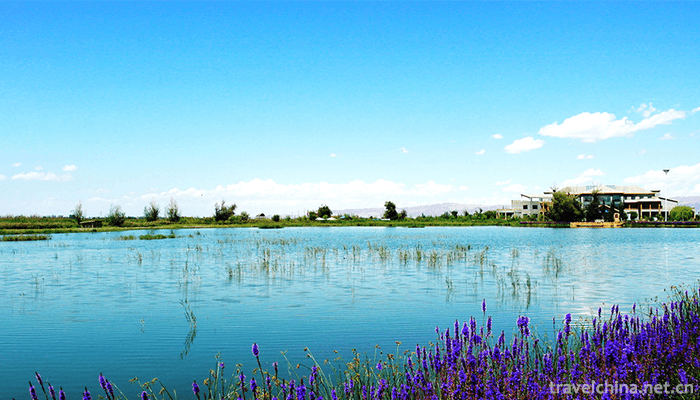
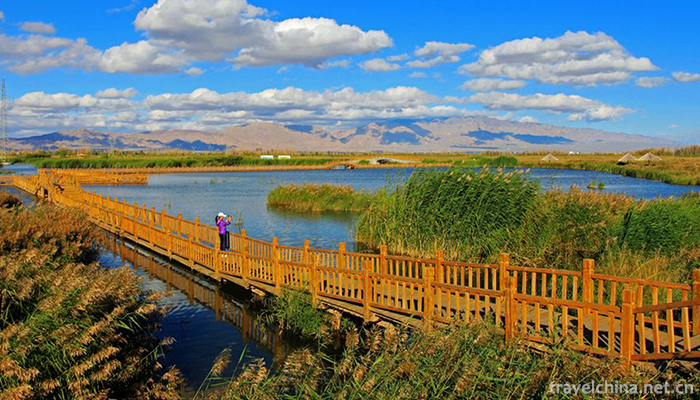
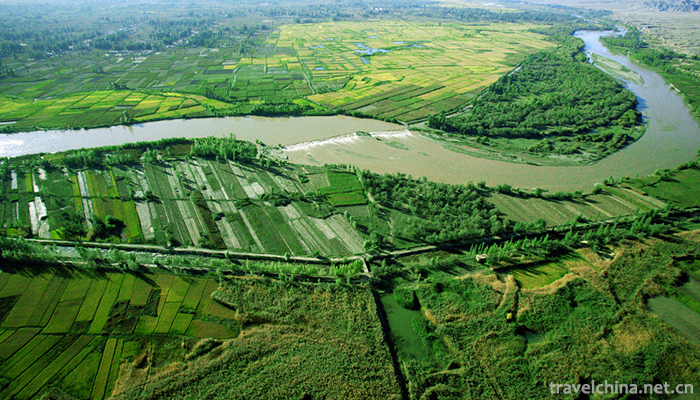
Ask a Question
Your email address will not be published.
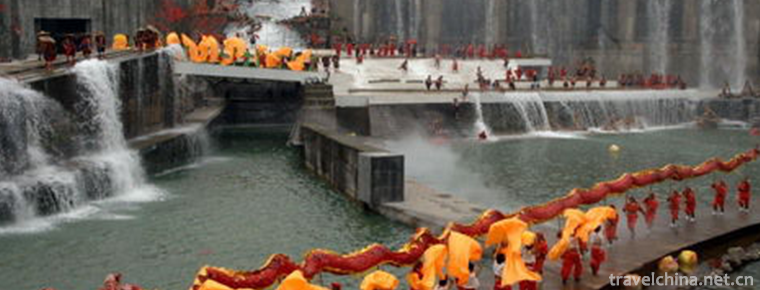

0 Questions